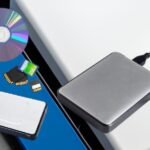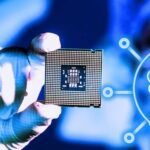The Industrial Internet of Things (IIoT) has emerged as a transformative force in modern manufacturing and industrial operations, enabling connectivity, data exchange, and automation across the industrial landscape. This comprehensive exploration delves into the intricacies of Industrial IoT, unraveling its fundamental principles, key components, recent innovations, notable applications, and the transformative impact it has on reshaping the landscape of manufacturing, maintenance, and industrial processes.
Understanding Industrial IoT
Industrial IoT refers to the network of interconnected devices, sensors, and systems embedded within industrial machinery, equipment, and infrastructure. It enables real-time data exchange, remote monitoring, and intelligent decision-making. IIoT integrates traditional operational technology (OT) with modern information technology (IT) systems, bridging the gap between industrial environments’ physical and digital worlds.
Key Components of Industrial IoT
The core components of Industrial IoT contribute to its functionality and effectiveness in industrial applications:
- Sensors and Actuators: Capture real-time data from industrial equipment and processes, monitoring parameters such as temperature, pressure, vibration, and flow rates.
- Edge Computing Devices: Process and analyze data closer to the data source at the network edge to reduce latency bandwidth usage and enable real-time decision-making.
- Connectivity Solutions: Provide communication protocols and technologies, such as Ethernet, Wi-Fi, Bluetooth, and cellular networks, to connect industrial devices and systems to the IoT network.
Recent Innovations in Industrial IoT
Recent innovations have propelled Industrial IoT to new heights, enabling the development of smarter, more connected, and more efficient industrial systems. Notable advancements include the adoption of digital twins, the integration of artificial intelligence (AI), and the use of blockchain technology.
Digital Twins
Digital twins are virtual replicas of physical assets, processes, or systems. They enable real-time monitoring, simulation, and optimization of industrial operations. Digital twins facilitate predictive maintenance, performance optimization, and scenario analysis, improving efficiency and reliability.
Artificial Intelligence (AI)
Integrating artificial intelligence (AI) algorithms into IIoT systems enables advanced analytics, anomaly detection, and predictive modeling. Machine learning and deep learning techniques are leveraged to derive actionable insights from large volumes of industrial data.
Blockchain Technology
Blockchain technology in IIoT enables secure, transparent, and tamper-proof data exchange and transactions between industrial devices and systems, ensuring data integrity, authenticity, and traceability in supply chain management, asset tracking, and quality assurance.
Notable Applications of Industrial IoT
Industrial IoT has diverse applications across various industrial sectors, contributing to improved productivity, efficiency, and safety in manufacturing, logistics, and energy management.
Predictive Maintenance
IIoT enables predictive maintenance strategies in manufacturing by monitoring real-time equipment conditions, performance, and health. It detects anomalies and potential failures before they occur, reduces downtime, and optimizes maintenance schedules.
Smart Grids and Energy Management
In energy management, IIoT facilitates the monitoring and optimizing of energy consumption, generation, and distribution in smart grids and industrial facilities, enabling demand response, energy efficiency, and cost savings through real-time data analytics and control.
Challenges in Industrial IoT
Despite significant advancements, Industrial IoT faces challenges that impact its widespread adoption and effectiveness in industrial environments. Addressing these challenges is crucial for ensuring interoperability, security, and scalability in IIoT deployments.
Interoperability and Standards
Ensuring interoperability and compatibility between diverse IoT devices, platforms, and protocols poses challenges due to fragmentation and a lack of common standards. This necessitates open-source initiatives and industry collaborations to define interoperable frameworks and protocols.
Security and Privacy
Protecting IIoT systems and data from cybersecurity threats, such as unauthorized access, data breaches, and malware attacks, requires robust security measures, encryption, authentication, and access controls to safeguard sensitive information and ensure privacy and integrity.
Future Trends in Industrial IoT
The trajectory of Industrial IoT indicates exciting trends that will further redefine its capabilities and applications in industrial automation and smart manufacturing. These trends promise to enhance intelligence, autonomy, and resilience, ushering in a new era of connected and intelligent industrial systems.
Edge AI and Fog Computing
The integration of edge AI and fog computing technologies enables distributed intelligence and decision-making at the network edge, reducing latency, bandwidth requirements, and reliance on centralized cloud servers for real-time analytics and control in IIoT applications.
Cyber-Physical Systems
The convergence of IIoT with cyber-physical systems (CPS) enables seamless integration between physical and digital systems, enabling autonomous and adaptive control of industrial operations, supply chains, and production processes in dynamic and unpredictable environments.
Conclusion
Industrial IoT is a transformative force in modern industrial operations, enabling connectivity, data-driven insights, and automation across diverse industrial sectors. From predictive maintenance to smart energy management, the impact of IIoT extends across various applications, reshaping how we design, monitor, and optimize industrial systems and processes. Despite challenges, ongoing innovations in digital twins, AI, and blockchain technology promise a future where Industrial IoT continues to push the boundaries of what is possible in industrial automation and smart manufacturing, unlocking new opportunities for efficiency, sustainability, and innovation in the industrial landscape.










